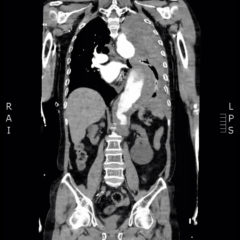Cocaine-induced Myocardial Infarction and Pulmonary Edema
ABSTRACT:
Audience:
The target audience for this simulation is emergency medicine residents and medical students at any level of training.
Introduction:
There are up to 1.6 million cocaine users reported in the United States (US) as of 2010.1 Cocaine accounts for 40% of drug-related deaths and up to 40% of US emergency department visits for illicit drug use.2 Cocaine is a drug of abuse that can have serious complications that the emergency physician should be prepared to manage. In small quantities, it may present with only mild symptoms; however, abuse in large quantities can result in cardiopulmonary complications including myocardial infarction and pulmonary edema.3 Toxicology simulations can provide a safe and educational environment in which to learn the acute management and treatment of conditions such as cocaine overdose.
Objectives:
By the end of this simulation session, the learners will be able to:1) Determine appropriate diagnostics in a patient with likely cocaine toxicity. 2) Identify and manage respiratory failure. 3) Identify and manage a ST-elevation myocardial infarction (STEMI) and pulmonary edema. 4) Identify and manage cocaine toxicity with benzodiazepines. 5) Determine appropriate disposition of the patient to the cardiac catheterization lab and an intensive care unit (ICU). 6) Demonstrate effective communication and teamwork during resuscitation of a critically ill patient.
Method:
This simulation is designed to be performed using a high-fidelity simulation mannequin. However, it could be adjusted for low- or moderate-fidelity simulation, or as an oral board case. At the end of the simulation instructors should debrief, provide feedback, and review key points for reinforcement.
Topics:
Simulation, cocaine, toxicology, myocardial infarction, pulmonary edema, altered mental status.

